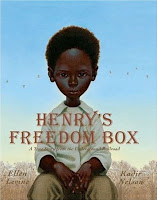Rules
By: Cynthia Lord
One c
 hapter book that I feel should be in every school library media collection is Rules written by Cynthia Lord. This is a story about a young girl, Catherine and the obstacles she and her family face with an autistic family member, David. David’s disability along with his social awkwardness embarrasses Catherine in public, so she creates a set of rules for David to follow. Through out the story, each chapter is a titled with a new rule. Catherine greatly cares for her brother but is torn between her love for him and her anger of his disability. Catherine longs to be accepted by her peers and battles with accepting Davis as her special needs brother. Catherine gets a new perspective on her situation with David, after meeting a young boy, Jason, who is nonverbal and in a wheelchair. Catherine is able to communicate to Jason by special word cards. She even creates her own cards to share with Jason. Soon they build a strong friendship in which Catherine learns valuable life lessons about acceptance and understanding differences.
hapter book that I feel should be in every school library media collection is Rules written by Cynthia Lord. This is a story about a young girl, Catherine and the obstacles she and her family face with an autistic family member, David. David’s disability along with his social awkwardness embarrasses Catherine in public, so she creates a set of rules for David to follow. Through out the story, each chapter is a titled with a new rule. Catherine greatly cares for her brother but is torn between her love for him and her anger of his disability. Catherine longs to be accepted by her peers and battles with accepting Davis as her special needs brother. Catherine gets a new perspective on her situation with David, after meeting a young boy, Jason, who is nonverbal and in a wheelchair. Catherine is able to communicate to Jason by special word cards. She even creates her own cards to share with Jason. Soon they build a strong friendship in which Catherine learns valuable life lessons about acceptance and understanding differences.
I feel that this book should be in every library media center because of the diversity it addresses and how it teaches valuable life lessons. I think this book could be very relatable to middle grade students because they can relate to Catherine’s feeling of longing for acceptance. This book addresses diversity by exposing readers to different disabilities. I think it is important for students to be exposed to different disabilities because it creates an awareness of and empathy for disabled individuals.
Henry’s Freedom Box: A True Story from the Underground Railroad
Written By: Ellen Levine
Illustrated By: Kadir Nelson
This is an inspirational picture book that should be apart of the collection at every library media center. This book, with its outstanding illustrations, follows the real life of Henry “Box” Brown and his escape from slavery. As a child Henry was taken away from his mother and sold to tobacco factory. As her grew older, Henry married another slave and together they had three children. Sadly, Henry is forcibly separated from his wife and children and desperately watches as they are solve into the slave market. Heartbroken and hopeless, Henry enlists the help of abolitionist doctor and mails himself in a packing crate “to a place where there are no slaves!” It takes over one full day for Henry to arrive at the address of the doctor’s friends’ house in Philadelphia. Through out Henry’s travels, the illustrator does a wonderful job at depicting the conditions Henry went through in the tiny wooden box. The story does not go on to tell about Henry’s life as a free man or if he was ever reunited with his family. However, the story stills provides the reader with valuable insight into a determined and resourceful man.
I think that this book is a great resource for young readers. The book is able to address diversity for a younger audience. This book exposes readers to the conditions and obstacles that many slaves faced trying to find freedom. I think this book would be a crucial resource to have to open up discussions about the Underground Railroad.













